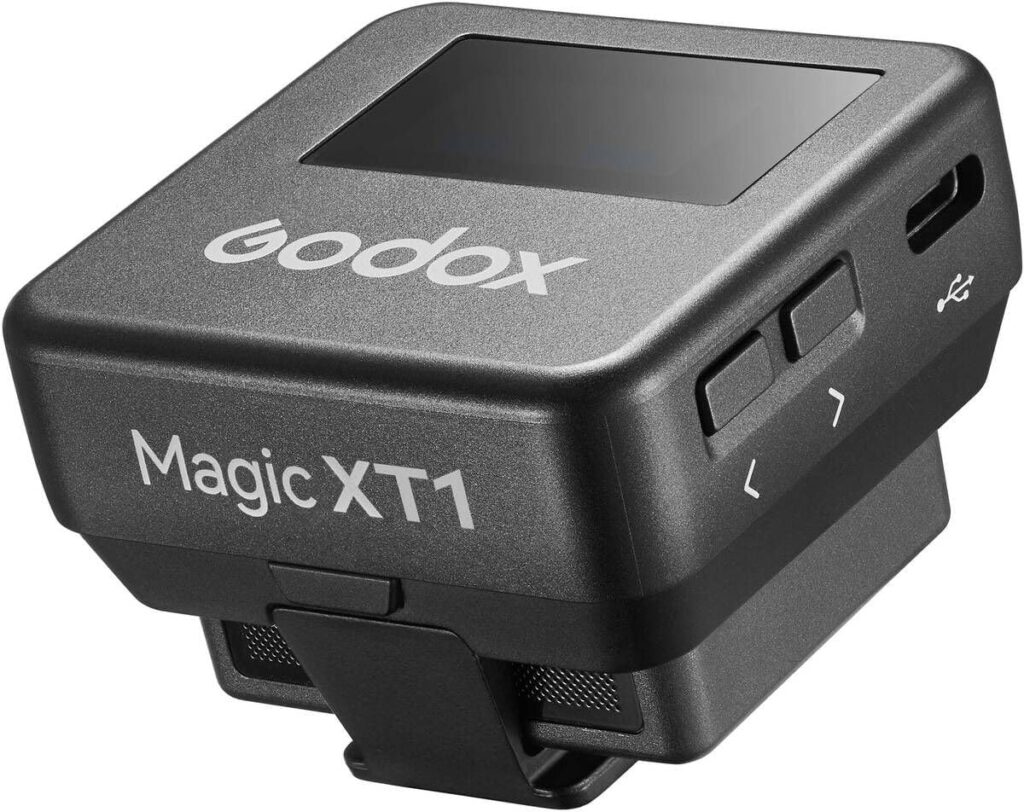Imagine this: You’re a writer racing against a tight deadline, but a sudden wrist injury leaves you unable to type. Panic sets in—until you discover voice typing. With a few spoken words, your thoughts flow effortlessly onto the page, saving the day. Welcome to the world of voice typing, a game-changing technology that transforms speech into text, making writing faster, easier, and completely hands-free. Whether you’re looking to boost productivity, overcome physical challenges, or simply try a new way to create, this guide is your ticket to mastering hands-free writing.
In this article, we’ll explore everything you need to know about speech-to-text technology. From setting it up on your devices to expert tips and tricks for flawless results, we’ve got you covered. Expect practical advice, real-life examples, and solutions to common hiccups—all crafted to make voice typing as easy as a conversation. Let’s dive in!
Introduction: What is Voice Typing and Why It Matters
Voice typing, also known as speech-to-text or dictation, uses voice recognition software to convert your spoken words into written text. It’s like having a personal scribe who listens and types for you—no keyboard required. This technology has evolved from clunky early systems to the sophisticated tools we use today, found in everything from smartphones to laptops.
So, why should you care about hands-free writing? For starters, it’s a productivity powerhouse. Studies suggest that people speak at 120–150 words per minute, far outpacing the average typing speed of 40–60 words. It’s also a lifeline for those with disabilities, repetitive strain injuries, or anyone who finds typing tedious. Plus, it frees your hands for multitasking—imagine dictating an email while brewing coffee!
In this guide, we’ll walk you through:
- Setting up voice typing on your devices
- Best practices for clear, accurate dictation
- Advanced tricks to level up your skills
- Troubleshooting tips for common issues
- Real-world stories of voice typing success
Ready to unlock the power of your voice? Let’s get started with speech-to-text software.
Getting Started with Voice Typing
Before you can dictate your next masterpiece, you need to set up voice typing on your device. The good news? It’s built into most modern systems, and third-party options offer even more features. Here’s how to get going on Windows, Mac, mobile devices, and beyond.
Setting Up Voice Typing on Windows
Windows offers a robust speech recognition tool that’s easy to activate. Here’s a step-by-step guide:
- Enable Speech Recognition: Go to Control Panel > Ease of Access > Speech Recognition. Click “Set up microphone” to begin.
- Configure Your Microphone: Follow the prompts to test and adjust your mic. A good-quality microphone boosts voice recognition accuracy.
- Train the Software: Select “Train your computer to better understand you” and read the provided sentences aloud. This helps the system adapt to your voice.
- Start Dictating: Open any text field, press Windows key + H, and start speaking. Say “stop dictating” when done.
Pro tip: Use a headset or external mic for clearer input, especially in noisy environments.
Setting Up Voice Typing on Mac
Mac users can rely on the built-in Dictation feature. Here’s how:
- Turn On Dictation: Go to System Settings > Keyboard > Dictation. Toggle it on and choose a shortcut (like pressing the Fn key twice).
- Select Language: Pick your preferred language and dialect for better accuracy.
- Enable Enhanced Dictation: Download this optional feature for offline use and real-time transcription.
- Start Talking: Open a document, trigger Dictation with your shortcut, and speak. Click “Done” or press the shortcut again to stop.
Mac’s Dictation is simple yet powerful, perfect for quick notes or longer writing sessions.
Setting Up Voice Typing on Mobile Devices
Your smartphone is a voice typing powerhouse. Here’s how to use it on Android and iOS:
- Android (Gboard): Install Google’s Gboard app if it’s not already your default keyboard. Tap the mic icon on the keyboard and start dictating. It works in most apps!
- iOS: Open any text field, tap the mic icon on the default keyboard, and speak. Tap the keyboard or “Done” to finish.
Mobile speech-to-text is ideal for on-the-go writing, like drafting emails or texting hands-free.
Choosing the Right Voice Typing Software
Built-in tools are great, but third-party dictation software can take voice typing to the next level. Here’s a quick comparison:
- Dragon NaturallySpeaking: Known for top-tier accuracy and advanced features like custom commands. Ideal for professionals but pricey.
- Google Docs Voice Typing: Free, browser-based, and surprisingly accurate. Open Google Docs, go to Tools > Voice Typing, and click the mic.
- Microsoft Dictate: An add-on for Word and Outlook, offering seamless integration with Office apps.
- Apple Dictation: Reliable for Mac and iOS users, with offline capabilities via Enhanced Dictation.
Choose based on your needs—free tools work for casual use, while premium options suit heavy-duty hands-free writing.

GODOX Magic XT1 Noise Cancellation 2.4GHz Wireless Microphone OLED Touchscreen,Power & Storage Integrated,for Cameras, Smartphone, PC, TikTok, YouTube
Best Practices for Voice Typing
Now that you’re set up, let’s polish your voice typing skills. These best practices will ensure your words translate perfectly to the page.
Speaking Clearly and Effectively
The key to successful speech-to-text? Clear communication. Here’s how to nail it:
- Enunciate: Speak each word distinctly—mumbling confuses the software.
- Moderate Pace: Aim for a natural speaking speed (120–150 words per minute). Too fast, and accuracy drops; too slow, and it feels awkward.
- Pause Thoughtfully: Brief silences between sentences help the system process your input.
Practice by reading a paragraph aloud—your software should keep up!
Using Punctuation and Formatting Commands
Want periods, commas, or new paragraphs? Just say it! Here are common voice commands:
- “Period” (.)
- “Comma” (,)
- “Question mark” (?)
- “Exclamation point” (!)
- “New line” (starts a new line)
- “New paragraph” (starts a fresh paragraph)
For formatting, try:
- “Bold that” (bolds the last phrase in some tools)
- “Italicize this” (italicizes selected text)
Check your software’s command list—Google Docs and Dragon, for example, support dozens of options.
Editing and Correcting Text
Mistakes happen, but fixing them is easy:
- Voice Corrections: Say “delete that” or “undo” to remove errors. In Dragon, “scratch that” works too.
- Select and Edit: Say “select [word/phrase]” then “replace with [new word]” (availability varies by software).
- Manual Tweaks: Use your keyboard or mouse for quick fixes—sometimes it’s faster.
Dictate a sentence, then edit it aloud to get the hang of it.
Preparing Your Environment
Accuracy depends on your setup:
- Quiet Space: Minimize background noise—think barking dogs or chatter.
- Quality Microphone: A USB or headset mic beats your device’s built-in one.
- Warm Up: Speak for a minute beforehand to relax your voice and avoid strain.
With these habits, voice recognition accuracy soars, making dictation a breeze.
Advanced Tips and Tricks
Ready to go beyond the basics? These expert tips and tricks will supercharge your voice typing game.
Training Your Voice Typing Software
Most tools improve with practice. Here’s how to train them:
- Windows: Revisit the “Train your computer” option and read more passages.
- Dragon: Use its training feature to read specific texts, refining recognition.
- Google/Android: The more you use it, the better it adapts to your voice.
Spend 10–15 minutes training, and watch errors drop.
Using Voice Commands for Navigation and Formatting
Take control without touching your device:
- Navigation: Say “go to end of line,” “move up one paragraph,” or “scroll down” (check software support).
- Formatting: Try “insert table,” “increase font size,” or “align center” in advanced tools like Dragon.
- Custom Macros: In Dragon, create shortcuts like “email signature” to insert pre-set text.
Experiment with commands to streamline your workflow.
Integrating Voice Typing with Other Tools
Boost efficiency by pairing speech-to-text with:
- Grammar Checkers: Run dictated text through Grammarly or ProWritingAid for polish.
- Text Expanders: Use tools like PhraseExpress to trigger long phrases with short voice cues.
- Automation: Link dictation to apps like Zapier for tasks like auto-saving notes.
For example, dictate a draft in Google Docs, then refine it with Grammarly—all hands-free.
Voice Typing for Specific Tasks
Adapt dictation to your needs:
- Fiction Writing: Speak dialogue naturally to capture tone.
- Coding: Tools like Talon Voice support coding commands (e.g., “insert function”).
- Emails: Dictate quick replies on your phone while multitasking.
Test it on a small project to see what clicks.
Troubleshooting Common Voice Typing Issues
Even the best voice typing setups hit snags. Here’s how to fix them.
Dealing with Misrecognition
When words get mangled:
- Spell It Out: Say “spell [word]” (e.g., “spell apple”) or use the phonetic alphabet (“alpha, papa, papa, lima, echo”).
- Retrain: Revisit training to teach the software tricky terms.
- Slow Down: Over-enunciate problem words.
Handling Background Noise
Noise can derail voice recognition:
- Use a Noise-Canceling Mic: Brands like Blue Yeti or Audio-Technica filter out distractions.
- Find Quiet: Move to a calm spot or dictate during off-hours.
- Adjust Settings: Increase mic sensitivity to prioritize your voice.
Improving Accuracy with Accents
Have a unique accent? No problem:
- Select Dialect: In Windows or Dragon, choose your accent (e.g., British English).
- Train More: Extra sessions help the software adapt.
- Test Alternatives: Google’s engine often handles accents well—give it a try.
Persistent issues? Switch tools or tweak your setup until it clicks.
Real-Life Applications of Voice Typing
Still unsure about hands-free writing? These stories show its impact.
Case Study: A Writer’s Experience
Jane, a freelance writer, struggled with writer’s block and wrist pain. She switched to voice typing using Google Docs. “Speaking my ideas broke the mental dam,” she says. “I doubled my output, and my hands thanked me.” She now drafts articles aloud, then edits manually—a perfect hybrid.
Case Study: Voice Typing in the Workplace
Dr. Patel, a busy physician, uses Dragon to dictate patient notes. “I finish charts in half the time,” he reports. Lawyers, journalists, and executives echo this—speech-to-text slashes admin work, freeing time for what matters.
From students to CEOs, voice typing boosts productivity across the board.
Frequently Asked Questions (FAQs)
Got questions? We’ve got answers.
How Accurate is Voice Typing?
Modern voice recognition hits 95%+ accuracy with clear speech and good conditions. Training and quality mics push it higher.
Can I Use Voice Typing in Different Languages?
Yes! Most tools support multiple languages—Google Docs offers over 100, while Dragon and Apple cover dozens. Switch in settings and go.
Are There Privacy Concerns with Voice Typing?
Some tools process audio in the cloud, raising privacy flags. Use offline options (Enhanced Dictation, Dragon) or review privacy policies if concerned.
What Hardware Do I Need?
A decent mic and a modern device (laptop, phone) are enough. For pro use, invest in a headset or USB mic.
Conclusion
Voice typing is more than a tech trick—it’s a gateway to faster, easier, and more accessible writing. From setup to advanced tricks, this guide has armed you with the tools to master hands-free writing. You’ve learned to set up speech-to-text on any device, perfect your dictation with clear speech and commands, and troubleshoot like a pro. Real-world wins prove it works, whether you’re drafting novels or dashing off emails.
So, why not give it a shot? Start small—dictate a grocery list or a quick note. As you get comfortable, let your voice carry your biggest ideas. The future of writing is here, and it’s as simple as speaking up. Happy dictating!
See Also
-

Microsoft Edge vs Chrome vs Firefox in 2025: Which Browser Is Truly Winning the Internet?
-

The Ultimate Guide to File Management: Declutter Your Digital Life Today!
-

The Future of Digital Note-Taking: How E-Ink Tablets Are Changing the Game
-

The Paperless Revolution: 7 DMS Platforms Set to Dominate Offices in 2025
-

Boost Your Workflow: The Ultimate Amazon Office Essentials for Peak Productivity
-

Is Gamma.app the Future of Presentations? A Brutally Honest Review
-

Level Up Your Stream! The Ultimate Guide to Building a Personal Live Studio Like a Pro
-

Master Google Forms Like a Pro: The Ultimate Guide to Customized Form Development
-

Voice Typing Made Easy: Expert Tips & Tricks for Perfect Hands-Free Writing